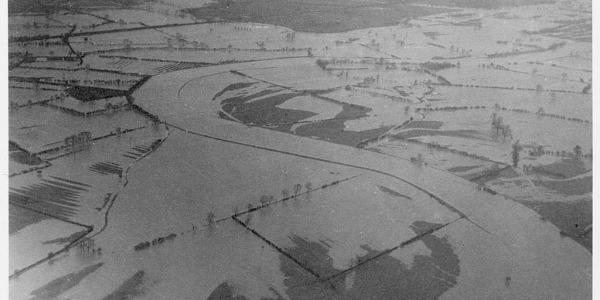
December 29, 2015, by Georgina
Widespread flooding and the centrality of ‘community’ response
The scale of loss and destruction wrought by the recent flooding across the north of England has been sobering. Communities in Cumbria, Lancashire, Greater Manchester and Yorkshire have all been, and continue to be affected. Amid threats of renewed floods with the imminent passage of ‘Storm Frank’- headline news at the time of writing- weather warnings have also been issued for parts of Wales, Scotland and Ireland. I suspect there is little to be said in the way of comfort for those affected but as communities are at once beginning ‘clean up’ operations while preparing for further flooding, the government has pledged more than £100m towards the crisis and intends to set in motion a major review of flood prevention strategy.
Our own work has revealed very many often harrowing accounts of widespread and destructive flooding affecting different parts of the country, charting damage to the built environment, and loss of livelihood and, sadly, life. It seems glib to refer to past examples, but I do this here to raise a point about the centrality of ‘on the ground’, community-led response, to these devastating events.
Benchmark UK flood events
Widespread and repeat flooding in 1795, 1852 and 1875 are used repeatedly as ‘benchmarks’ in many of our flood accounts. Flooding between September and December 1852 – a result of unusually high rainfall across much of central England- was the subject of an Illustrated London News feature on 4 December 1852, while the rain and floods of 1875 were the focus of an enquiry produced for the Institution of Civil Engineers, authored by George Symons – head of the British Rainfall Organisation (BRO). The problem in 1875, Symons argued, stemmed from the cumulative impacts of multiple periods of unusually wet conditions (Symons, 1876). The “number as well as the volume of the floods of 1875” was thus “extremely unusual.” The first flood took place in July (15th) a result of rainfall of “unusual amount and duration” over a period of 30 hours and as Symons notes, “in most localities 90 or more per cent fell in twenty four hours”. This was followed by further flooding on 19th and 21st July when “heavy rain fell in various parts and “all of the districts visited by the heavy rains had previously been nearly saturated by those of the 14th to the 16th” resulting in inundations, canal breaches, railway disruption and considerable damage. While the August that followed was generally dry, there were some unusually heavy rain days and a wet September followed. October, Symons notes, was a “very wet month”. On the 9th “a heavy fall occurred over central England… much land was under water” . There were numerous days when torrential rain fell and “rain fell over the whole of England and Wales to an average depth of 2 inches… the ground being saturated nearly all the low lying lands were flooded and the total area under water was probably greater than it had been for many years, certainly since 1852.” With a continuously wet November much of the flooded land remained so until the later part of that month. This then was a year memorable for large scale and prolonged flooding.
Community response
Twentieth century Hydrologist H.R. Potter later noted, however, how the flooding fostered a sense of community cohesion: “all neighbours who had little bones to pick with one another appeared from the bird’s eye view to have put all bickering aside, and were joining heart and hand in helping brethren in distress to make the best of a bad job”.
What we have seen in terms of community and emergency service responses across Northern England in the past few weeks also points to evidence of a civil society pulling together and drawing on local mechanisms of collective action. Shared concerns and values, the common sense of loss during or following flooding, and a sense of civic responsibility, have served as a catalyst for community engagement, cohesion and co-operation, of mutual assistance and support.
A new weather era
Yet as we enter what The Guardian has referred to as “the new weather era” – one of increased likelihood of more frequent and devastating flooding- there is a need for a more comprehensive understanding of the pathways through which communities have gathered and galvanised themselves in this way following flood crises. Exploring the influence of political structure on decision-making processes within communities and on the role that local institutions and the idea of ‘community’ itself play in shaping capacity to respond are critical areas of enquiry. After all, and as we have recently witnessed, collective ‘on the ground’ action necessarily has to be at the very heart of developing coping strategies among those communities who are becoming accustomed to living with flood risk.
References
- H.R. Potter. The 1875 Floods, Nottingham University Manuscripts and Special Collections HRP/F/1/3/1
- Symons, G.J. (1876) On the floods in England and Wales during 1875, and on Water Economy. Proceedings of the Institution of Civil Engineers, 45: 1-14
No comments yet, fill out a comment to be the first

Leave a Reply